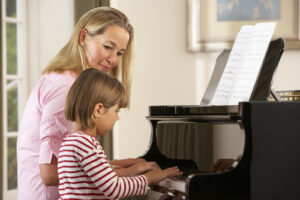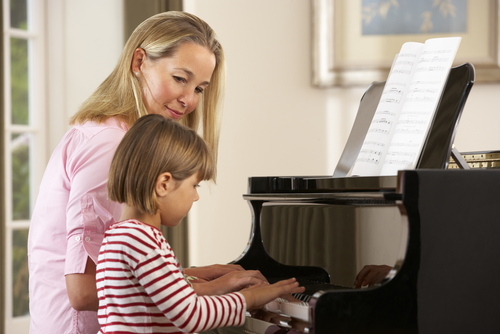Karen Marshall, author of the Get Set! Piano series and How to Teach Instrumental and Singing Lessons – 100 Inspiring Ideas (due out in October), shares her advice for teaching new starters!

I remember my first piano lesson and how excited I was to attend, I don’t remember my first violin lesson though. Why was one more memorable than the other? As we begin a new year this September many of us will be welcoming new starters. This is my own personal list of ‘to dos’ in that lesson. (Teachers are the expert in their own teaching practise, please do let us know in the comments your thoughts and ideas on the topic!)
- Remember that this is a special thing for the student and the parent, try to make the first lesson memorable. A happy experience that paves the way for a positive teaching partnership between you, the parent and the child. I always try to be the teacher I would want for my own children recognising how precious the child is to that parent.
- Make the lesson personal in some way. This can be something as simple as working at the rhythm of the child’s name or including their name in a piece – like in Get Set! tutor 1 – Bounce High, Bounce Low where the child’s name is included. This can make them feel special, it’s personal to them.
- Making music at the heart of the lesson – As a young pianist I was very frustrated when my teacher talked lots and played lots. I wanted to be the one making music. There are lots of ways this can be done even in the beginning stages. These include improvising playing on the black notes, plucking open strings, making up music to go with pictures (children love to experiment on their instruments from thunderstorms to different animals). You can also just give them one note to play on any instrument, with you playing something that fits with that note.
- The importance of pulse – Don’t forget pulse is such an important foundation. Get the student to walk to the pulse, mark the pulse with one note on their instrument or use percussion (claves and drums have a place in instrumental lessons).
- Provide a sense of achievement with appropriate praise – Students young or old like to feel they’ve achieved something. Taking about what has been achieved in specific terms is really useful. Eg. Today you have learnt about correct posture with your instrument, I was really impressed how you did this etc. List as many things as possible. Labelling all the positives which will build confidence for the week ahead and future lessons. Remember Rome is never built in a day when it comes to learning an instrument.
Here’s a useful rhythm for teaching pulse:
Pulse is a steady beat (crotchet, 2 quavers, 2 quavers, crotchet)
Feel it moving in your feet (2 quavers, 2 quavers, 2 quavers, crotchet)
Always steady, keep in time (2 quavers, 2 quavers, 2 quavers, crotchet)
Tap your feet and say this rhyme. (2 quavers, 2 quavers, 2 quavers, crotchet)
For all the latest news, views and offers from Collins Music sign up for our enewsletter here.



